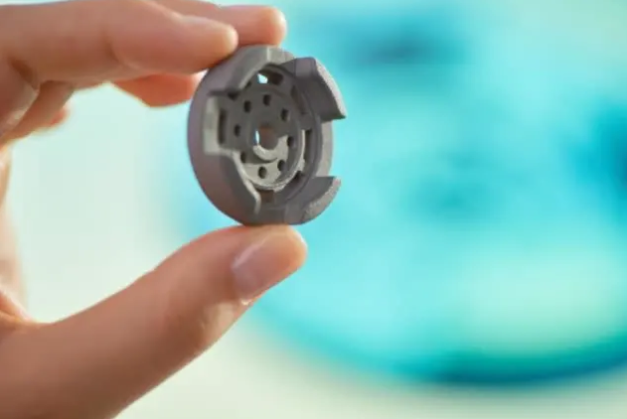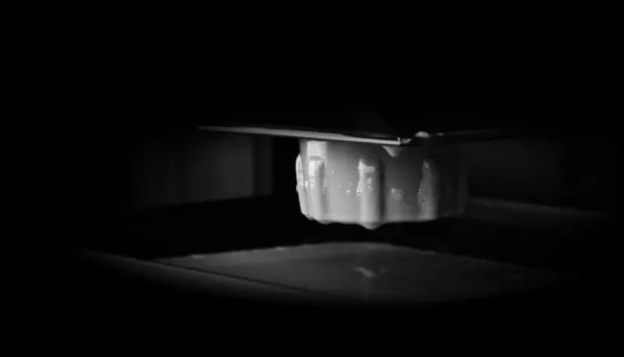Three Predictions of 3D Printing for 2019
Originally published at engineering.com.
3D Printing Predictions for 2019

3D printing has come a long way from its origins in the 1980s, with a brief entry into the consumer space galvanizing its growth in the earlier part of the decade. Now, it seems as though mass production with additive manufacturing (AM) technology is just around the corner, as a number of companies introduce methods for batch 3D printing.
To learn how the AM space will change in 2019, engineering.com got feedback from several experts in the space, including those from exciting new startups that will break onto the scene in 2019.
Mass Production
There is a strong sense in the industry that mass production is the next big thing in 3D printing and Christoph Schell, President 3D Printing & Digital Manufacturing at HP Inc., seemed to lend credence to the buzz.
“2019 will be the year that additive manufacturing moves from prototyping into full production in the automotive industry,” Schell said. “In the move to full production, 3D printing enables the automotive industry to innovate faster, leverage flexible manufacturing, reinvent supply chains, create new markets and produce new parts in new ways that were previously impossible.”
HP, of course, aims to play a prominent role in this evolution with its Multi Jet Fusion (MJF) and Metal Jet 3D printing technologies, both of which are designed for large batch production. The company has already seen BMW make use of MJF to create its one-millionth 3D-printed part, a guide rail for the BMW i8 roadster. BMW was able to 3D print up to 100 of these parts in just 24 hours.
In addition to potential improvements to time-to-market and cost reduction, mass production with 3D printing carries with it developments in the manufacturing supply chain. “In 2019, we’ll see an increase in real-time supply chain traceability thanks to the integration of machine learning and 3D printing,” said Paul Benning, HP Senior Fellow and Chief Technologist of 3D Printing at HP Inc. “Continued advancements in artificial intelligence deliver the capability for a team of engineers and designers to monitor a finished 3D-printed part in the field in order to determine how it performs over its lifespan. The ability to uniquely peg each part with a unique serial number will improve the design configurations of these parts.”

New Materials
While HP may be among the most well-known in the 3D printing space shooting for mass production, there are new startups like Evolve Additive and Origin that are using their own proprietary technologies for 3D printing large runs of plastic parts. Their technologies are covered in greater depth in our respective interviews with the companies, but it’s worth noting how important materials are to Origin’s unique 3D printing process.
The startup’s technology does not rely on oxygen for 3D printing photopolymer materials, opening the process up to a wider variety of materials, such as polyolefins. Through an open material API, Origin believes that more material makers will be able to develop plastics that work with the firm’s process.
Chris Prucha, CEO and founder of Origin, gave his prediction for the coming year, saying, “2019 will bring about a massive transformation of the additive material space — specifically in regard to photopolymers, genuinely open systems, and even M&A in the material space. Not only will we see the costs of photopolymers fall to levels that are competitive with SLS and FDM thermoplastic, but the mechanical performance of the newest photopolymers will exceed the best Nylon SLS printed parts. We’ll also continue to see more and more R&D dollars being spent by large material and chemical companies into formulating new materials for open platforms, such as ours, that allow entirely new material chemistries to get to market and customers to control their own destiny.”
Prucha highlighted the fact that these changes in material development will push us closer to additive mass manufacturing, ultimately opening up more applications, such as the production of auto parts and consumer goods at scale.
Among the material companies Prucha may be referring to is BASF, the world’s largest chemical business, which has been making a number of moves in the space as of late. Along with partnering with Origin, BASF has made a large investment in 3D printing software developer and service provider Materialise.
In its own set of predictions for 2019, Materialise echoed Prucha’s observation about plastics. Giovanni Vleminckx, a materials expert in the company’s research and development team, explained in the Materialise report, “New materials for 3D printing were not being produced because they were not processable on commercially available machines. Now, large material suppliers are signaling their willingness and drive to push forward with 3D printing technology. That’s leading to a steady fast growth for 3D printing plastics.”
 Mass Metal 3D Printing?
Mass Metal 3D Printing?
A number of firms have their eyes on mass metal manufacturing. The majority of the companies working toward achieving this goal, including HP, have developed binder jet platforms for mass printing parts. Boston-based Digital Alloys, on the other hand, has a completely novel approach to fusing metal parts called Joule Printing.
The startup’s CEO Duncan McCallum said that, by the end of 2019, these new binder jetting systems, along with Joule Printing machines, will end up in the hands of customers. Each technology type, however, will have their own set of applications.
“With binder jetting, there’s a thickness limitation for the parts you can print, typically a centimeter or two. If you’re thicker than that, you can’t get high-quality, full-strength metal parts. It tends to be used for parts that are smaller than about a baseball or so. There are a lot of such parts. For that part of the market, I think it has good relevance,” McCallum said. “Our world is larger parts. We don’t compete. We’re [competing against] machined titanium parts, tooling, etc.”
Though he doesn’t have inside knowledge, McCallum anticipates binder jetting being used for production applications in 2020, while Joule Printing will be used in production applications in 2019 with Digital Alloys early adopters.
As for powder bed fusion, McCallum doesn’t personally believe it has broad applicability in production. “It’s too complicated and too expensive, so I don’t think the adoption rate of powder bed fusion is going to see an inflection,” he said.
We’ll have to see how these predictions pan out. Because the industry doesn’t exist in a vacuum, it’s difficult to say how outside forces will impact the development of 3D printing technology. For instance, the stock market is on a tenuous path and shifts in global powers, economies and even climates may impact the way the wind blows.





Leave a Comment
Want to join the discussion?Feel free to contribute!